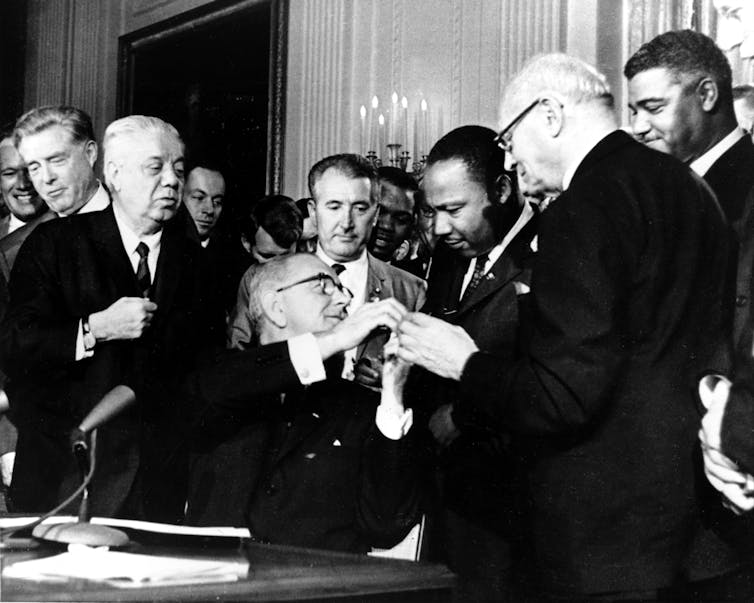Ensuring Racial Equality – from Classrooms to Bathrooms – Depends on Federal Regulations Trump Wants to Roll Back
The Trump administration is considering eliminating one of the federal government’s most basic tools for preventing racial discrimination.
When the government runs or funds programs, those programs are obligated to ensure that everyone gets equal access and treatment. This duty comes from something called “disparate impact regulations.” These regulations require the programs to pay careful attention to whether their policies cause racial disparities.
From my perspective as a scholar of discrimination law, abandoning these regulations would be a major departure from the federal government’s mission since the 1960s of ensuring racial equality.
Historical roots

In the 1950s and 60s, civil rights advocates challenged racial segregation and inequality in every facet of public life – from schools, buses and bathrooms to employment, housing and restaurants. Congress passed the Civil Rights Act of 1964 to stamp out as much of that discrimination as possible, prohibiting discrimination in all those areas and more.
But Congress went beyond just prohibiting “discrimination.” It recognized that prohibiting policies with obvious or explicit intent to discriminate was not enough to ensure equality.
Following Congress’s lead, the Department of Justice concluded in a 1966 report that policies that impact one racial group more than another should also be prohibited. Numerous other agencies agreed and put in place what we now call “disparate impact regulations.”
The fact that some policy or practice disproportionately affects a racial group does not alone violate the regulations. The disparity, if serious enough, simply triggers further investigation by a federal agency. That investigation involves two key additional questions.
First, does the program have a good reason, or “legitimate justification,” for the policy that is causing the racial disparities? If not, the agency can block the policy because the disparities are unjustified.
But if the program has a good reason, which it often does, the second question is: Can an alternative policy achieve the program’s goals without producing egregious racial disparities? If so, the program should pursue the less discriminatory alternative because the disparities are clearly unnecessary.
Regulations matter
Today, discrimination and inequality continue largely due to subconscious racial biases. These biases are rampantand affect everything from who gets a job to who gets suspended from school.
These regulations alleviate the need to dig into individuals’ minds and search for very difficult to prove racial CONTINUE READING: Education Law Prof Blog


